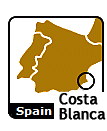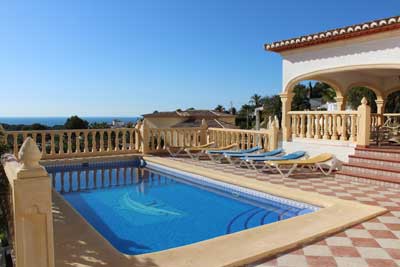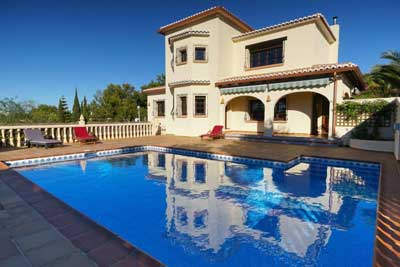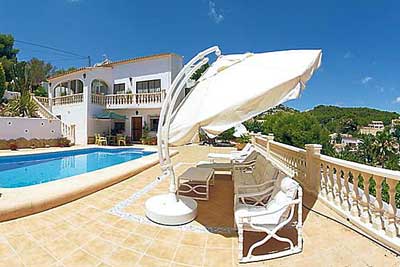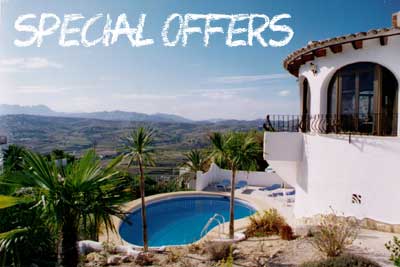Villas to rent Spain

ELCHE
Elche is the third largest city in the Valencia region in terms of population size and resources. A stroll through the city’s streets will reveal an interesting historical centre, a silent witness to its glorious past. Between the 8th and 9th centuries it was a walled city of Al-Andalus, falling to the Christians in 1265; however, a mere two kilometres south of the present city is its original site, La Alcudia, known as Heliké. It was continuously inhabited from the Neolithic period until the Visigothic period. The primitive settlement developed into the Iberian city of Heliké. The city’s Iberian culture experienced a golden age, producing sculptures such as the Dama d’Elx. The Iberian city was romanised in 209 BC and in the 1st century BC it was granted the title of Colonia Iulia Ilice Augusta. This glorious past contrasts harmoniously with all of the elements characteristic of a young, dynamic city with a unique townscape due to its location in Europe’s largest palm grove. The Palm Grove, legacy of the Andalusí farming culture, has been declared a World Heritage Site by UNESCO.
harmoniously with all of the elements characteristic of a young, dynamic city with a unique townscape due to its location in Europe’s largest palm grove. The Palm Grove, legacy of the Andalusí farming culture, has been declared a World Heritage Site by UNESCO.Elche also boasts a second cultural asset that has been declared World Heritage by UNESCO: the Elche Mystery Play. This Masterpiece of World Oral and Intangible Heritage, a religious lyrical drama, is the last surviving example of European medieval religious drama and is performed every year during the month of August. Moreover, Elche is the Spanish footwear capital, a modern town with a booming services sector, making it a dynamic, open and welcoming city.
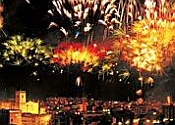 The night of August 13th Nit de l’Albà, is one of the celebrations that the townspeople of Elche look forward to most eagerly. Hundreds of fireworks light up the sky in a barrage of colour and sound. The fiesta’s origins date back to the Middle Ages when families offered a rocket to the Virgin for each of their children. Today the tradition has metamorphosed into a coordinated, organised firework display where hundreds of fireworks are fired from different points of the city. As well as the organised display, the townspeople also join in spontaneously with their own fireworks. The colourful storm of rockets and fireworks begins at 23:00 hours and continues unabated until a few minutes before midnight. Suddenly all the fireworks cease and the city lights are turned off. The people of Elche remain silent while they listen to “el Gloria”, the most significant fragment of the Mystery Play. For a few seconds, the darkness blanketing the city is brilliantly lit up by an enormous white starburst, la palmera de la Virgen, which is released from the Basilica de Santa María. Once the magic moment has passed, the city lights are restored and on the Basilica’s tower an image of the Virgin in fireworks bursts into life accompanied by the famous habanera “Aromas ilicitanos” with all of the townspeople joining in the song from their balconies and roofs. The traditional final act to the fiesta is for the people to eat a watermelon. Some people prolong the fiesta, firing rockets well into the small hours while the more daring take part in the traditional guerra de carretillas, where people chase each other pushing carts designed to look like dragons, spitting fireworks from their mouths. This takes place in the specially designated areas in the city centre that can appear to be scenes from hell – an event recommended for only the most hardened fire lovers.
The night of August 13th Nit de l’Albà, is one of the celebrations that the townspeople of Elche look forward to most eagerly. Hundreds of fireworks light up the sky in a barrage of colour and sound. The fiesta’s origins date back to the Middle Ages when families offered a rocket to the Virgin for each of their children. Today the tradition has metamorphosed into a coordinated, organised firework display where hundreds of fireworks are fired from different points of the city. As well as the organised display, the townspeople also join in spontaneously with their own fireworks. The colourful storm of rockets and fireworks begins at 23:00 hours and continues unabated until a few minutes before midnight. Suddenly all the fireworks cease and the city lights are turned off. The people of Elche remain silent while they listen to “el Gloria”, the most significant fragment of the Mystery Play. For a few seconds, the darkness blanketing the city is brilliantly lit up by an enormous white starburst, la palmera de la Virgen, which is released from the Basilica de Santa María. Once the magic moment has passed, the city lights are restored and on the Basilica’s tower an image of the Virgin in fireworks bursts into life accompanied by the famous habanera “Aromas ilicitanos” with all of the townspeople joining in the song from their balconies and roofs. The traditional final act to the fiesta is for the people to eat a watermelon. Some people prolong the fiesta, firing rockets well into the small hours while the more daring take part in the traditional guerra de carretillas, where people chase each other pushing carts designed to look like dragons, spitting fireworks from their mouths. This takes place in the specially designated areas in the city centre that can appear to be scenes from hell – an event recommended for only the most hardened fire lovers.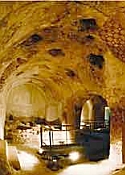 The Arab baths - According to the Prophet Mohammed, “Cleanliness is an act of faith” and for the Islamic world, water is a God-given gift linked to wisdom and purity. The Andalusí culture converted the ritual ablutions into one of life’s pleasures, using various oils and essences. The Arab hammân, descendants of the Roman thermae, had tiled walls and rooms which were separated by columns and arches, all crowned by vaulted ceilings with lanterns. Not only were they a place to relax, they were also meeting places. An audio commentary complements the visit to the baths, explaining the origin of this public service and how they worked.
The Arab baths - According to the Prophet Mohammed, “Cleanliness is an act of faith” and for the Islamic world, water is a God-given gift linked to wisdom and purity. The Andalusí culture converted the ritual ablutions into one of life’s pleasures, using various oils and essences. The Arab hammân, descendants of the Roman thermae, had tiled walls and rooms which were separated by columns and arches, all crowned by vaulted ceilings with lanterns. Not only were they a place to relax, they were also meeting places. An audio commentary complements the visit to the baths, explaining the origin of this public service and how they worked.Address: Passeig de les Eres de Santa Llúcia, 13, 03202 Elche Tel: +34 965 45 28 87 (Closed Mondays).
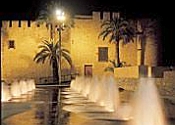 The City’s Archeological Museum is located in the Palacio de Altamira, a palace also known as Alcàsser de la Senyoria. The Alcàser de la Senyoria was the residence of the lords of the city between the 15th and 19th centuries. This fortress was built in three different stages: the first, the Almohad part dating from the late 11th and early 12th century, can be observed in the basic body of the large tower and several plinths; the second part, belonging to the 15th and 16th centuries, and the largest part of the building, was raised after Gutierre de Cárdenas took over stewardship of the city. It is a large, solid edifice with the walls executed in rubblework and interlocking masonry at the corners. The third and last part is the large 18th century south façade built over the former medieval entrance. It has a polygonal ground plan whose angles are defined by rounded corners except in the area occupied by the square tower which has three bodies. In 1913 it was converted into a textile mill and is now home to the museum.
The City’s Archeological Museum is located in the Palacio de Altamira, a palace also known as Alcàsser de la Senyoria. The Alcàser de la Senyoria was the residence of the lords of the city between the 15th and 19th centuries. This fortress was built in three different stages: the first, the Almohad part dating from the late 11th and early 12th century, can be observed in the basic body of the large tower and several plinths; the second part, belonging to the 15th and 16th centuries, and the largest part of the building, was raised after Gutierre de Cárdenas took over stewardship of the city. It is a large, solid edifice with the walls executed in rubblework and interlocking masonry at the corners. The third and last part is the large 18th century south façade built over the former medieval entrance. It has a polygonal ground plan whose angles are defined by rounded corners except in the area occupied by the square tower which has three bodies. In 1913 it was converted into a textile mill and is now home to the museum.Orihuela is further on so you can incorporate both towns within a day's excursion.
Check our up-to-date Villa Availability page.

